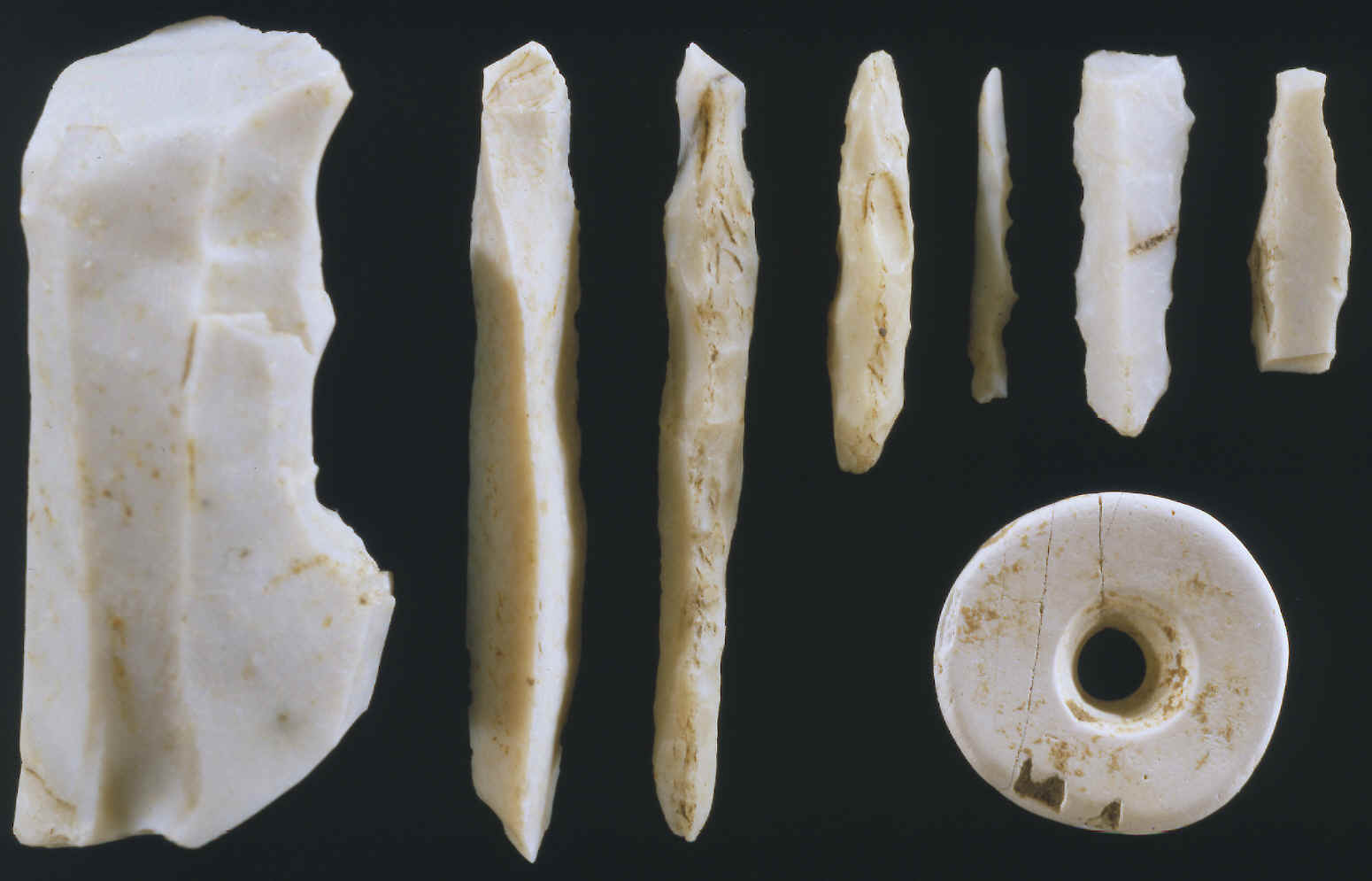|
A SELECTION OF DIFFERENT
-SOUTHERN ILLINOIS The eight artifacts in this picture illustrate a range of different break patterns, manufacturing debris and a finished product, a
drilled bead. The small core, Cahokia Indian who last used it. In the row of six blades, the long slender flake on the left
was struck drill. It represents a knappers' castoff. According to Morse (1983) the most desirable blade is one that is both narrow and thick. One that could be easily fashioned into a cylinder shape. The next one to it is a nice long finished drill that has not had much use. ends. The fourth one over is a very small fine tipped micro drill. It's much smaller that the average size found at Cahokia. The two on the far right were both snapped---probably from use. The one on the end was snapped on both ends and the second
one over was is the most common type found at Cahokia. It was drilled, as all of
them probably were, with stone drills. in diameter.
|
